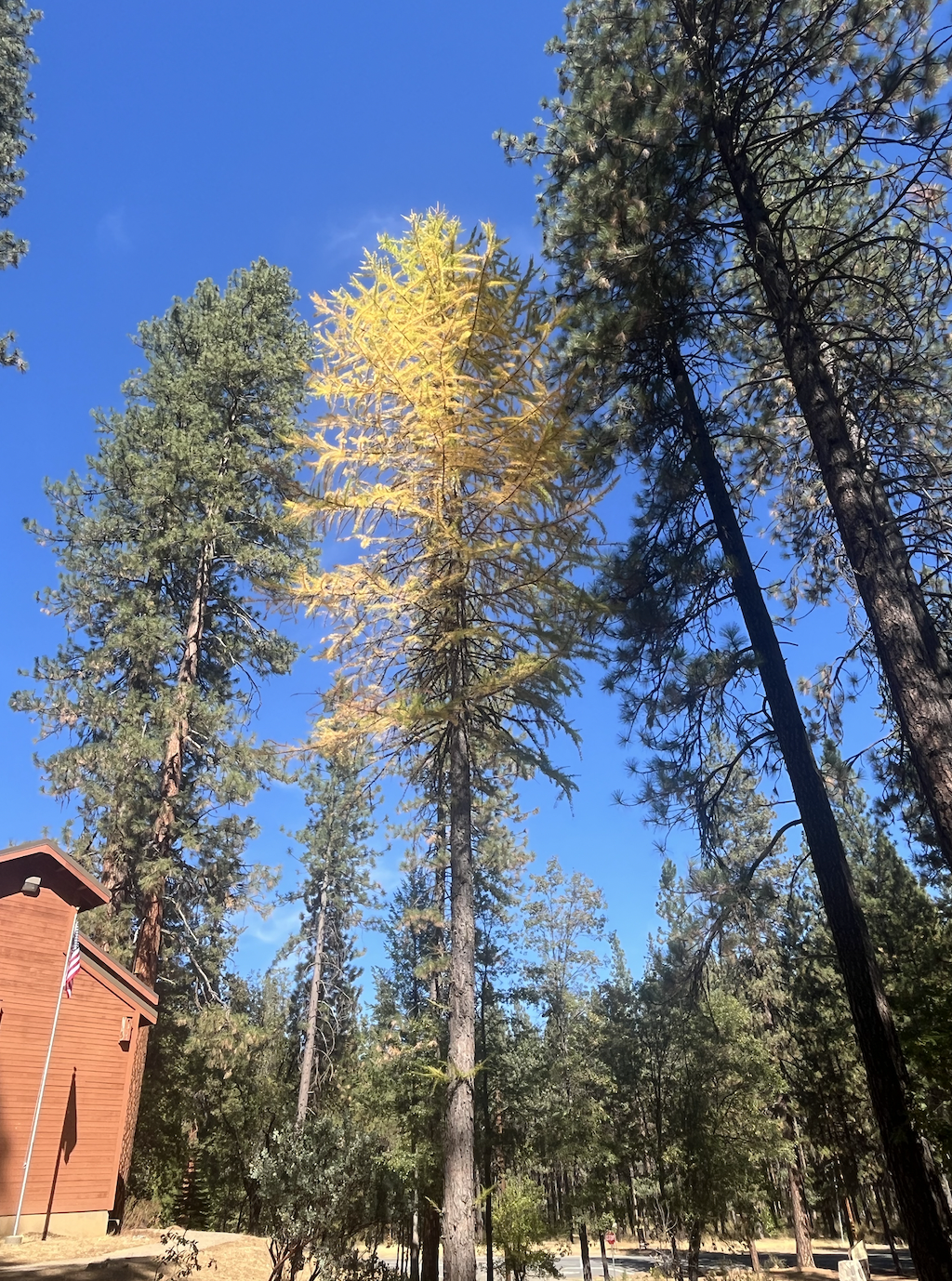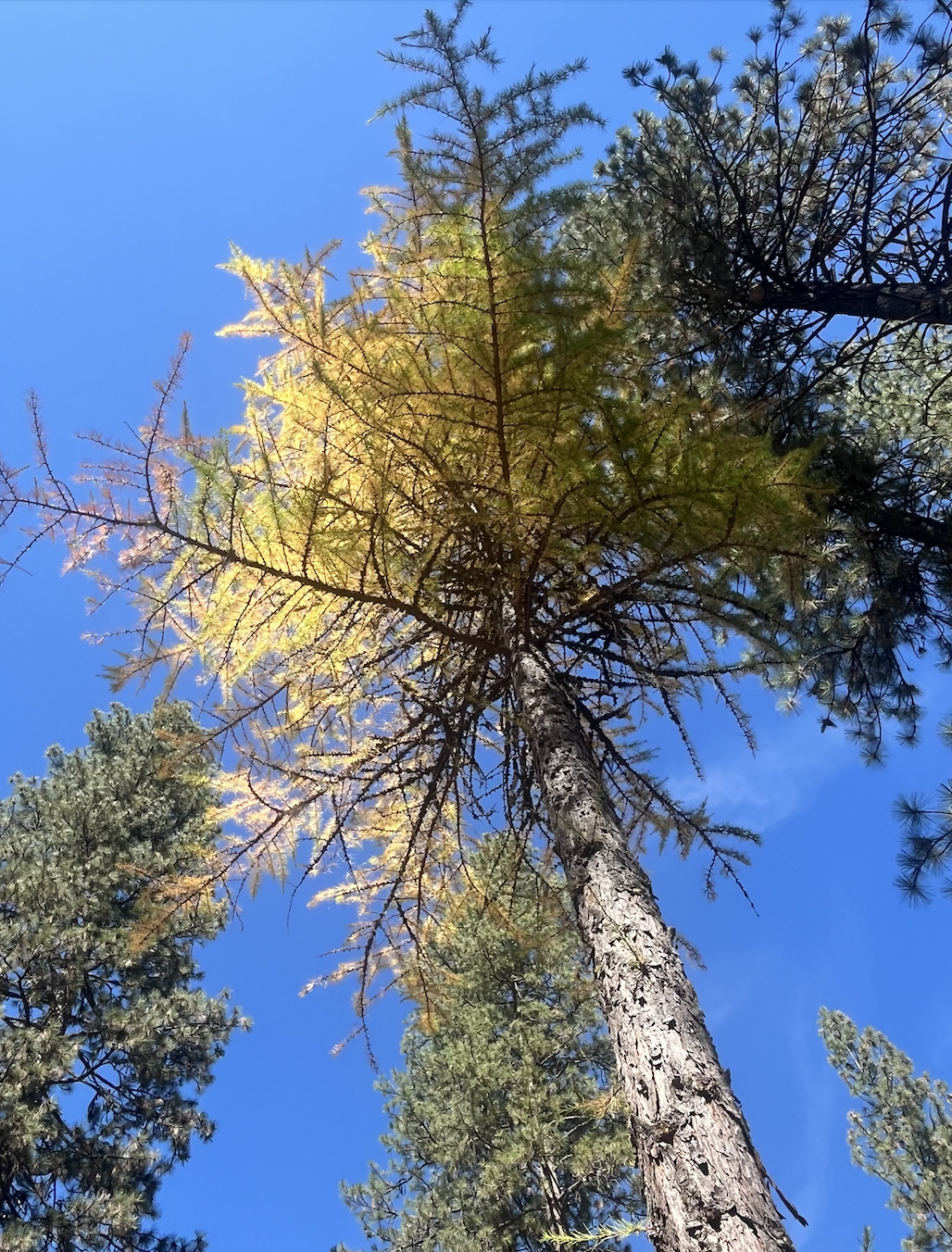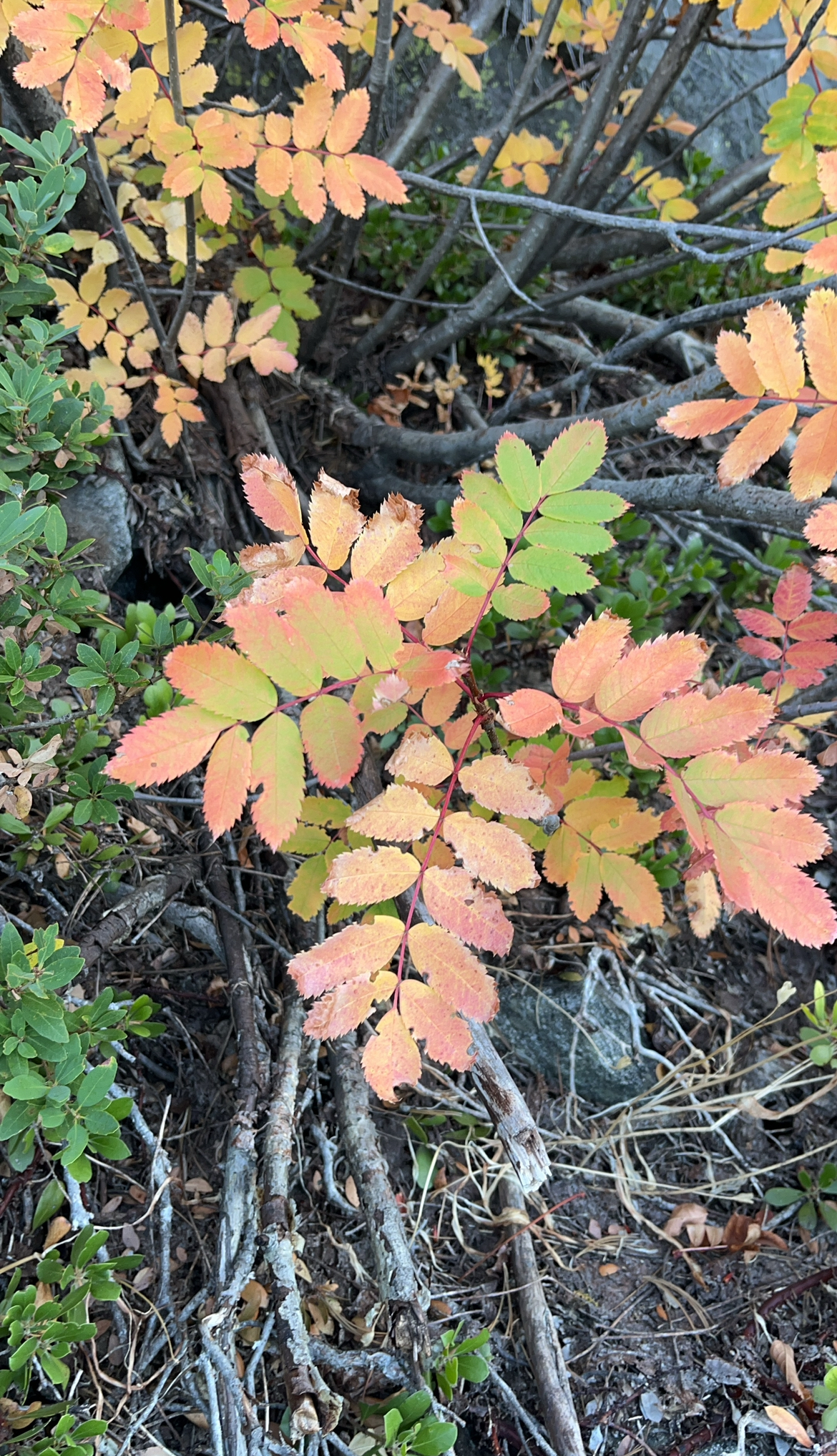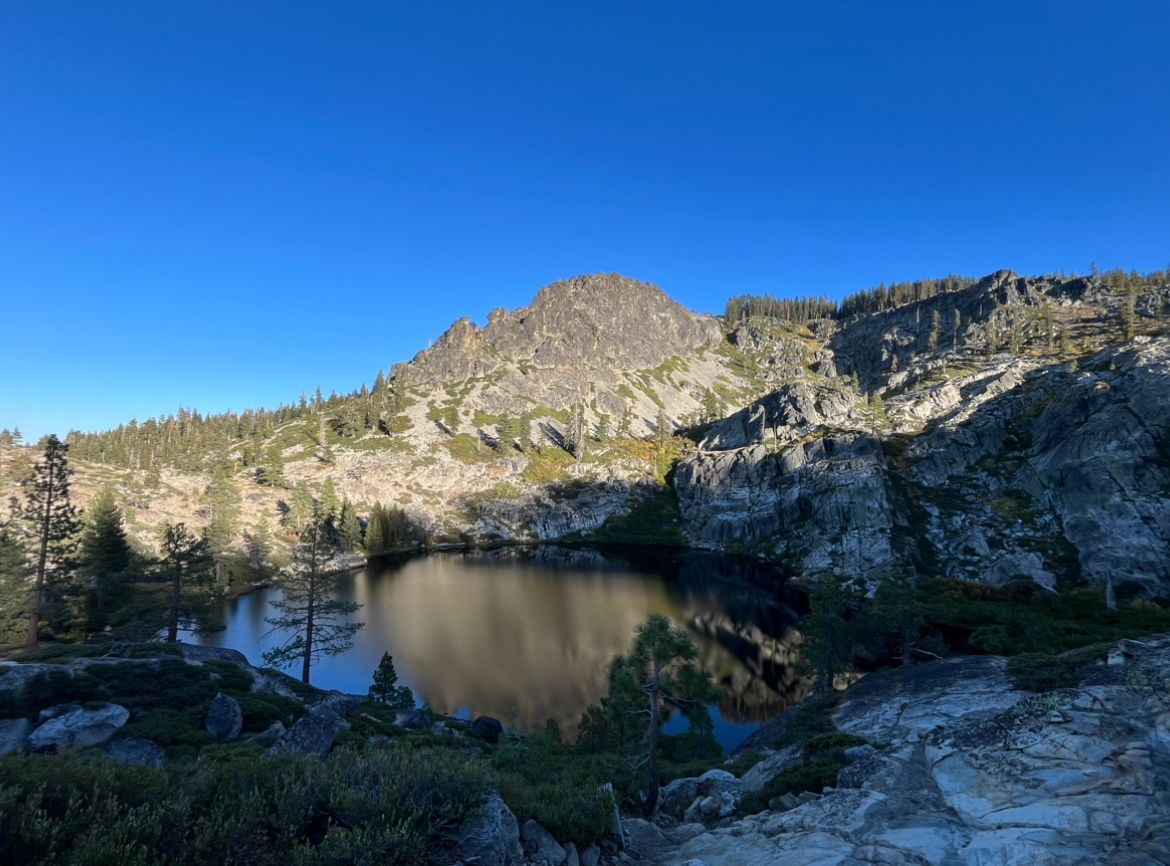Slowly but surely, fall is arriving here at Plumas National Forest. While the days of 105 degree heat and nonstop wildfires are behind us, we still aren’t experiencing the usual crisp in the air, bright orange leaves, and frequent rainfall that is familiar to me as an Easterner. The majority of our trees here in Plumas are conifers; pines, firs, douglas fir, trees that remain green year-round (as opposed to the deciduous, or seasonal shedding, nature of most flowering trees). This results in a subdued sweep of fall colors, making you have to search a little more to find signs of the new season. While the days are hot, my morning walks to the office now require a thick sweater and often a mug of hot coffee as well. The constant sunshine and clear skies are now occasionally interrupted by foggy, drizzly days. We may not have dense orange-red forests, but in some places, pops of color are emerging, reminding me that my work here is rapidly coming to an end.

The hardy evergreen conifers found in Plumas National Forest are a reflection of our regional climate. Located in Northern California, in the Sierra Nevada, means we have arid summers and cold winters. Conifers have evolved to withstand harsher environments, with their sturdy pine needles resisting the cold and retaining moisture better than their broadleaf counterparts. Flowering plants, however, fair better when they go through the annual process of preparing for winter. By shedding their leaves, they are able to essentially “hibernate”, conserving water and energy, and reducing the risk of branches falling off during a heavy snowstorm.
While it is true that most conifers are evergreen, there are exceptions. Our Ranger Station has a few ornamentals planted, trees that are native to the Western US, but not California. One of our most notable planted species is a Western Larch (Larix occidentalis). Native to northwestern states such as Washington, Montana, and Idaho, the Western Larch has evolved to be both deciduous and needle-bearing. This is an advantage to them in their native range, where winters are especially long and frigid. Winter photosynthesis is not optimal in these regions, so Western Larches shed their needles in order to maximize their protection. Having a bright pop of yellow amongst our green Ponderosa Pines is a wonderful sight, and makes me want to explore its native region in the Eastern Cascades!


Another deciduous species I’ve found is Mountain Ash, Sorbus sitchensis, a shrubby plant that has pinnate leaves resembling those of Ash trees. Despite the similarity in common name and appearance, Mountain Ash is not in the same family as Ash trees, it’s in the rose family, Rosaceae. A great example of why it’s important to learn latin names, so that confusion is avoided!

With the end of summer also comes the end of field work. Sam and I spent the past month refining, cleaning, and reviewing our work from the summer. Bags and bags of unprocessed seed were worked through, and countless hours of tedious seed cleaning eventually resulted in a satisfying compilation of all of our work, organized neatly into labeled plastic bags. With most of our tasks approaching completion, I’ve had some more time to reflect on my experience as a CLM intern. I feel tremendous satisfaction and gratitude washing over me as I think back to my first week here, and how I went from knowing nothing about Western plants to being where I am today. I’ve had great mentors, and many great experiences to help me solidify my skills and knowledge. These past few weeks I’ve been mindful of this new “lens” I’ve developed, now that I have a greater understanding of the world around me in this region, a feeling that first drew me into botany. It’s a profound appreciation for being able to see the beautiful details of the natural world.

I’ll miss Plumas National Forest, but I am excited to see what’s next for me and the rest of the 2024 CLM cohort!
-Andrea
